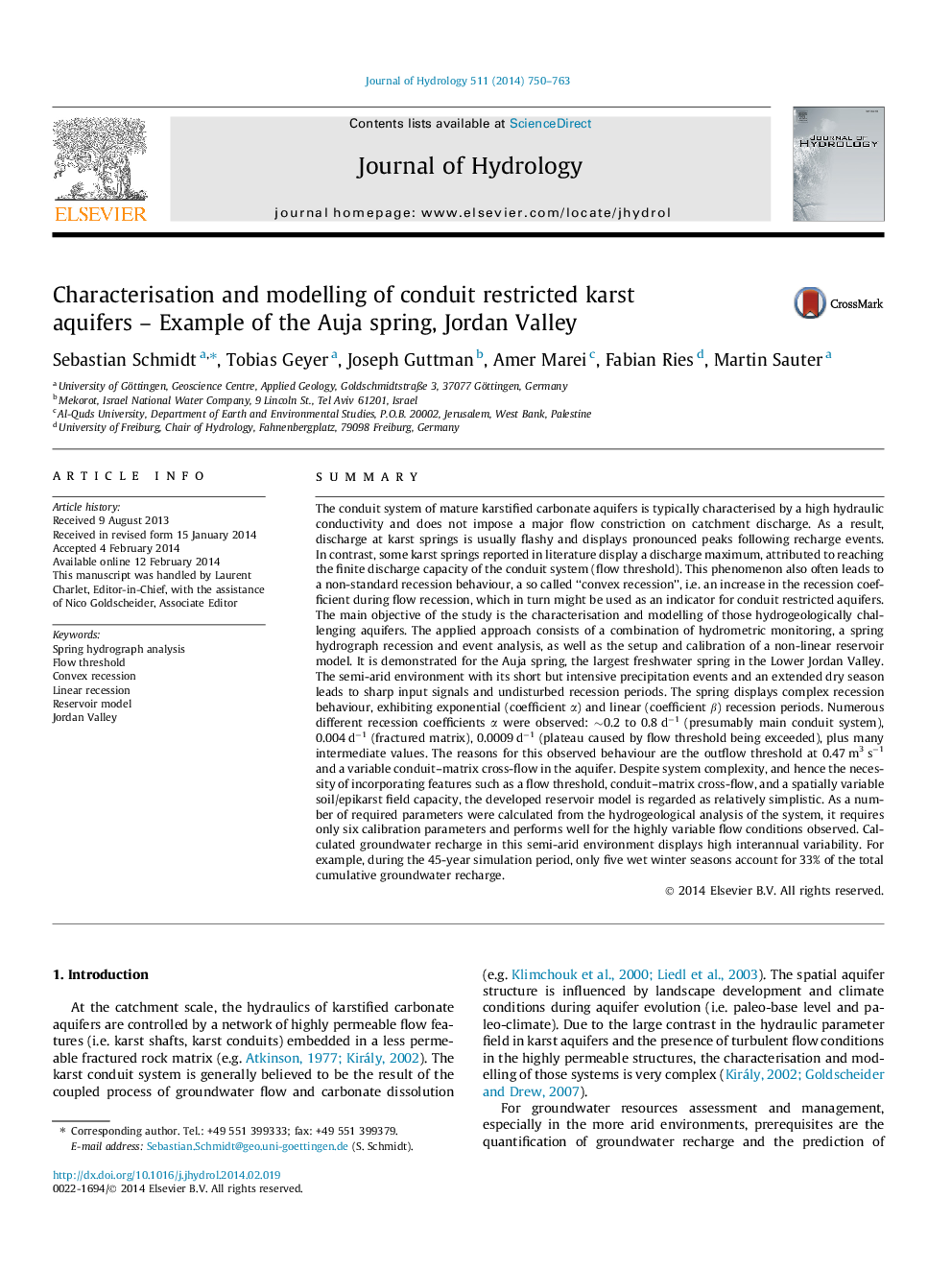| Article ID | Journal | Published Year | Pages | File Type |
|---|---|---|---|---|
| 6413347 | Journal of Hydrology | 2014 | 14 Pages |
â¢Complex recession behaviour caused by flow threshold and conduit-matrix cross-flow.â¢Spring hydrograph and recession analysis of long-term and high-resolution time series.â¢Simulation of spring hydrograph with a non-linear reservoir model.â¢Water balance modelling to assess groundwater recharge in a semi-arid karst area.
SummaryThe conduit system of mature karstified carbonate aquifers is typically characterised by a high hydraulic conductivity and does not impose a major flow constriction on catchment discharge. As a result, discharge at karst springs is usually flashy and displays pronounced peaks following recharge events. In contrast, some karst springs reported in literature display a discharge maximum, attributed to reaching the finite discharge capacity of the conduit system (flow threshold). This phenomenon also often leads to a non-standard recession behaviour, a so called “convex recession”, i.e. an increase in the recession coefficient during flow recession, which in turn might be used as an indicator for conduit restricted aquifers. The main objective of the study is the characterisation and modelling of those hydrogeologically challenging aquifers. The applied approach consists of a combination of hydrometric monitoring, a spring hydrograph recession and event analysis, as well as the setup and calibration of a non-linear reservoir model. It is demonstrated for the Auja spring, the largest freshwater spring in the Lower Jordan Valley. The semi-arid environment with its short but intensive precipitation events and an extended dry season leads to sharp input signals and undisturbed recession periods. The spring displays complex recession behaviour, exhibiting exponential (coefficient α) and linear (coefficient β) recession periods. Numerous different recession coefficients α were observed: â¼0.2 to 0.8 dâ1 (presumably main conduit system), 0.004 dâ1 (fractured matrix), 0.0009 dâ1 (plateau caused by flow threshold being exceeded), plus many intermediate values. The reasons for this observed behaviour are the outflow threshold at 0.47 m3 sâ1 and a variable conduit-matrix cross-flow in the aquifer. Despite system complexity, and hence the necessity of incorporating features such as a flow threshold, conduit-matrix cross-flow, and a spatially variable soil/epikarst field capacity, the developed reservoir model is regarded as relatively simplistic. As a number of required parameters were calculated from the hydrogeological analysis of the system, it requires only six calibration parameters and performs well for the highly variable flow conditions observed. Calculated groundwater recharge in this semi-arid environment displays high interannual variability. For example, during the 45-year simulation period, only five wet winter seasons account for 33% of the total cumulative groundwater recharge.
